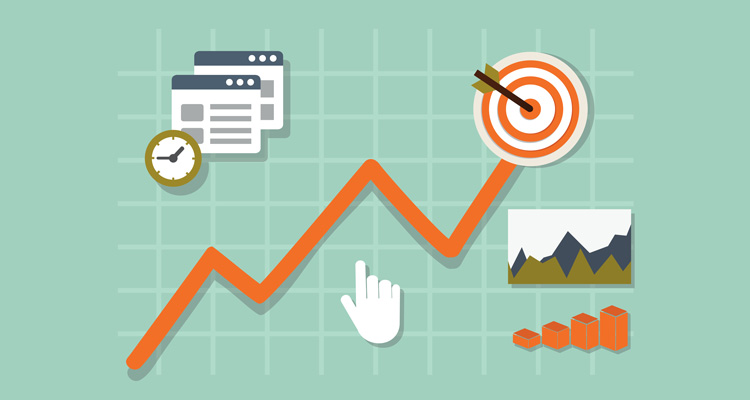Have you lost touch with your customer base? Unsure what motivates customers to buy your products? Or what price-point they are willing to pay for your services? Perhaps it’s time for a spot of market research.
As with any type of research, the whole point of market research is to collate as much information as possible about a specific marketing issue to inform the decision-making process. That is not to imply that market research is only implemented if there a ‘problem’ as such. You might just want to understand the market better, or get a more in-depth insight into your customer base, or use the results for product development purposes. It can prove beneficial (and obviously informative) in many, many different situations. Generally speaking, if you are thinking about embarking on an effective market research program, there are five simple steps (define, collate, analyse, report and decide) and one complicated step (design).
Step One: Define your objectives, questions, problems or alternatives
This is the all important first step. Stuff this up, and your market research project is doomed to fail before it’s even begun. The key thing to remember is not to define the research topic either too broadly or too narrowly. For example, if you are the proud owner of a coffee shop and you are thinking about opening a second coffee shop, in a new suburb, a disastrous objective would be: Find out all there is no know about the new suburb. The results would include too much extraneous information. Often, it is easier to work backwards when defining a research objective. In this instance, the first question should be: Should I open a new coffee shop? If the answer is yes, then narrow the questions further: Should I open a premium brand store? What prices should I charge? What range of products should I stock? Based on the answers to these questions, you can set specific market research topics: What types of customers are likely to respond favourably to the opening of a new coffee shop in suburb X? How many people are likely to buy my products at X, Y and Z price points?
Step Two: Design your research plan
The complicated step. You have probably already guessed what is involved in this step: work out how you are going to collate, capture or hunt down the data you need. Above all, make sure that your method is efficient and cost effective. In the case of the new coffee shop, there is no point spending $50K on market research, if your profit is only likely to be $60K. You are going to have decide on:
- Data sources: will you go with secondary data, primary data or a combination of both? For those of you scratching your heads right about now, secondary data has already been collated and exists elsewhere (like academic essays or Ibis World reports). Primary data is the stuff that you will have to collect yourself. The most cost-effective approach would be to review the low-cost, readily available secondary data first. If the secondary data is out-of-date or inaccurate or incomplete, then you will need to source primary data.
- Research approaches: there are four major approaches:
- Observational: as the name suggests, observational research involves observing potential customers as unobtrusively as possible while they shop or consume products. If we go back to the coffee shop example, we might deploy researchers into neighbouring suburbs (or the new suburb) and have them observe particular aspects of coffee-drinkers habits (busiest time of day, type of coffee bought, customer demographic).
- Focus groups: usually gatherings of around six to ten people carefully selected, based on demographic, psychographic or other features. These people will discuss your research topic at length. This can be a very insightful method, but you need to make sure you don’t generalise their views across an entire market. It is only six people after all!
- Surveys: I think we all know what these are. You can use them to assess people’s knowledge, beliefs, spending habits, buying habits and so on. The main rule for surveys: keep them short and simple.
- Behavioural research: this can be a tricky research approach, particularly if you are a small operator. If you are a retail giant, then you can analyse the data from customer rewards programs (like Flybuys).
- Research instruments: there are three main research instruments to ponder over: questionnaires (sets of questions presented to respondents), qualitative measures (like word associations, visualisation, brand personification) and technological devices (galvanometers which measure emotion).
- Sampling plan: you need to ask yourself three questions. 1. Who should be surveyed? 2. How many people should be surveyed (larger samples usually return more reliable results)? 3. How should you choose the respondents? In general, probability sampling allows marketers to calculate confidence limits for sampling errors and makes the sample more representative.
- Contact methods: there are so many ways to get a hold of people in this day and age. Gone are the days when you had to send everything by snail mail and pray for a response. You can try via phone (the interviewer can clarify questions, although the reputation of telemarketers isn’t exactly peachy), in person (probably the most versatile method: interviewer can ask more questions and record more observations like dress and body language. But it is most expensive and it is subject to interviewer bias), or online.
Step Three: Collate the data
The most expensive and drawn-out step by far. Also the most prone to errors. Once you have answered all the questions in steps one and two, you actually have to do the research. Send out the surveys. Conduct the focus groups. Deal with the issues. Survey respondents will unavailable. You will have to contact them again and again. Some respondents will refuse to cooperate. Some will tell lies. Even researchers will be biased or dishonest. Unfortunately, you can’t do too much about it.
Step Four: Analyse the data
If you an Excel genius, this is the step for you! Here you will need to extrapolate your findings. Calculate the percentages, compute the averages and apply advanced statistical analysis.
Step Five: Present the findings
Simply translated: create some fancy graphs (another step for Excel whizz-kids)! Work out your insights and recommendations. Pretend that you have to present the results of all your research to the Board of Directors. What would you tell them? What are the main trends? What are the averages? From these, what can you deduce? Be compelling.
Step Six: Make the decision
Based on all the market research, your fancy graphs and statistical analysis, the findings and recommendations, are you actually going to open your new coffee shop?
Thanks to Sally Wood for sharing these insights into effective market research.
About Sally Wood
Having worked in marketing, communications and public relations roles for over ten years, Sally’s past life includes a plethora of activities, some of which even she can’t believe she was lucky enough to try her hand at. There was the development and implementation of internal communication programs for burly construction contractors; PR campaigns to launch The Simpson’s products (which just happened to involve carting life-sized Simpson figures around the country); people (and media) wrangling at Flemington’s birdcage for high-profile clients during the Melbourne Cup Carnival; CSR program design, implementation and GRI-accredited reporting; and, most recently, copywriting and internal stakeholder relations in a most serious corporate environment. Somehow, in the midst of all that, she also managed to get stuck into some study, undertaking a Bachelor of Arts / Law, completing a Postgraduate Bachelor of Letters in Public Relations and Journalism and recently starting an MBA.
Sally Wood
Latest posts by Sally Wood (see all)
- 6 Free Marketing Plan Templates - July 22, 2018
- The Ultimate Guide to Instagram Advertising - June 23, 2018
- Q&A with Amy Cockerell, Marketing Coordinator at the TAC - October 6, 2016








